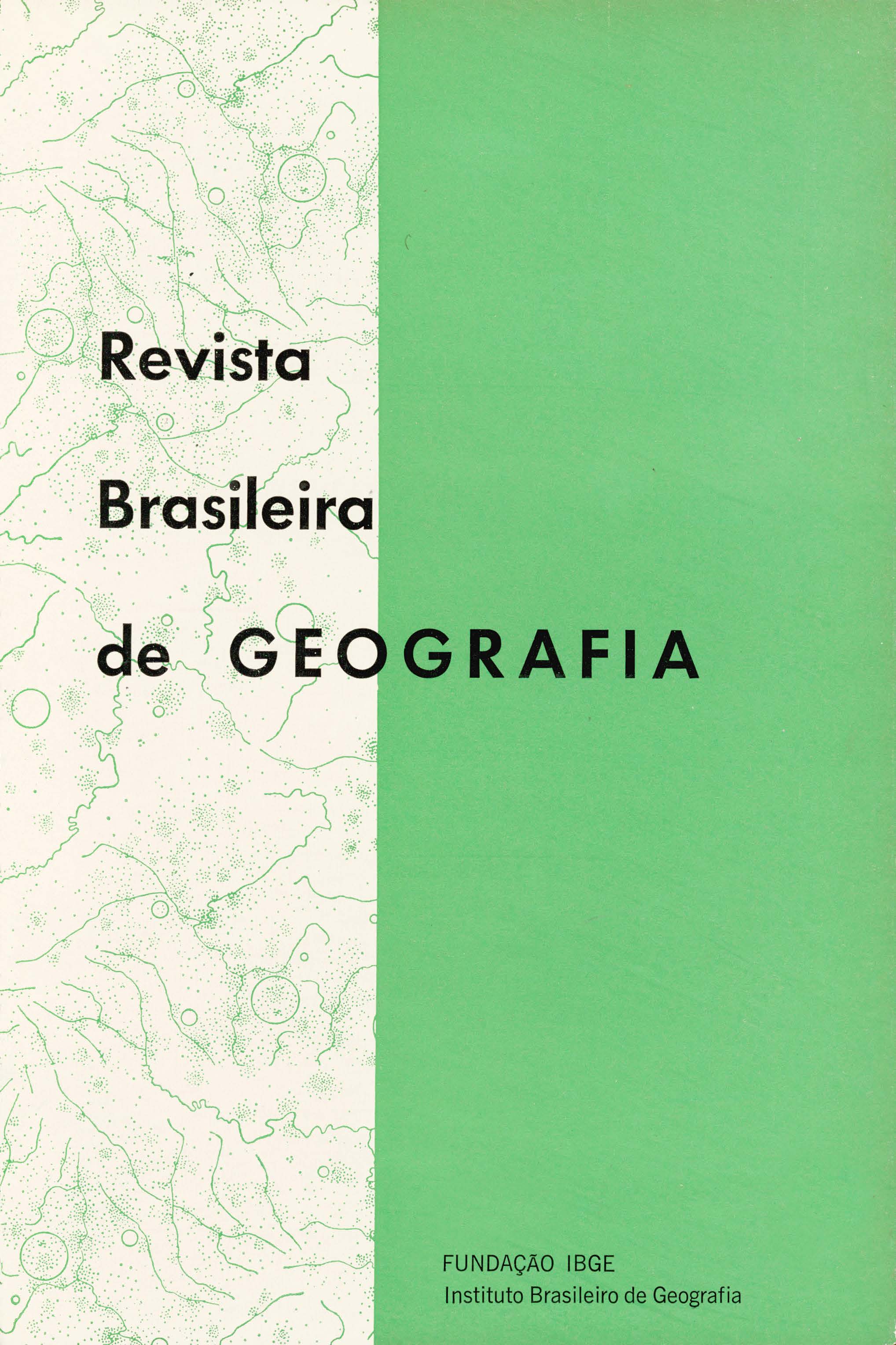As Grandes cidades brasileiras : dimensões básicas de diferenciação e relações com o desenvolvimento econômico : um estudo de análise fatorial
Keywords:
Geografia urbana, Regiões metropolitanas, Análise fatorial, Desenvolvimento econômicoAbstract
The study applies a quantitative technique (factual, dimensional and group analyses) to define the basic dimensions of the Brazilian urban system, to characterize each of the cities or the metropolitan clusters in accordance with the attributed dimensions and to interpret the results.
To this end, 30 variables mentioned in the text were applied and 50 of the largest Brazilian cities (employing for many of them the figures of their urban-metropolitan agglomerations) were considered, their list also shown in the text. The work starts by analyzing the various categories of classification of the cities, showing their unidimensional character, rendering these multivariate quantitative techniques more appropriate for analyzing the urban structure in accordance with the numerous components of which they are formed, and enabling the study to be incorporated not only in the framework of the theory of general systems, but also following the angle of probability of the stochastic models.
Among the elements deriving from this analysis, four are of special importance: Functional Size, Socio-Economic Status, Social Infrastructure, Functional Specialization and Accessibility and Sectoral Specialization (in the traditional fields of textiles and comestibles).
The functional size represents the total population, the labor force In industry, business firms, wholesale and retail establishments, number of vehicles, etc., thus constituting an accurate measure of the aggregate economic size. On this basis, São Paulo surpasses indisputably the whole Brazilian urban network, especially Rio de Janeiro which appears quite a distance from São Paulo. This form of measurement distinguishes well between the Brazilian cities; it does however situate cities of the Center-Southern system, such as Campinas and Santos, with figures higher than those of Belém, on the same level as those for Fortaleza.
The Socio-Economic factor, differentiates quite well between the cities belonging to the more-developed region and those of the under-developed areas. The Center-Southern cities show positive figures and the Northeastern cities show negative values. In this form of measurement, São Paulo also emerges with far higher value than that of Rio de Janeiro and Pôrto Alegre, whose functional size was not much higher than that of Recife, whereas in the Socio-Economic Status it stands well ahead of Recife, thus thoroughly confirming the importance of the regional differentiation in economic development.
The importance of this Factor hinges on the fact that many cities, especially the capitals, show much higher indexes in this Factor than would be reasonably expected, considering the values of the preceding Factor. Rio de Janeiro and São Paulo have equal values In this Factor, which is probably due to the fact that Rio de Janeiro was for a very long time the Capital of the country and was able to channel considerable resources into its social infrastructure. A similar situation exists in Northeastern capitals.
Finally, the functional structure of the cities appears established in a Factor that distinguishes the industrial nuclei with their better accessibility from the non-industrial nuclei, much farther away, on one hand and on the other hand, in connection with the industrial nuclei, differentiates between those where the textile-comestibles predominate, these possessing a lower multiplying capacity.
This factor clearly distinguishes between the industrial nuclei of the more highly developed regions, such as Jundiai, Caxias do Sul, Bauru, Sorocaba, etc. and those nuclei of the North-East where the textile and comestibles fields of activity predominate.
In summary, these Factors all clearly show an urban and well characterized structure in the Center-South, hierarchically organized and, more especially, properly distributed whereas in the North-East, below the level of the metropolises there are only the State capitals where the process of growth is obviously motivated.
The widening of the gap between São Paulo and Rio de Janeiro, to an almost equal extent the same as that between Rio de Janeiro and Pôrto Alegre, is turning the Brazilian urban network into something akin to Rank-Size tyde, but more specially in the Center-South which is more highly developed.
Another important factor is that this regularity is more apparent at the level of cities below the metropolises, inasmuch as on these latter the industrialization process, or far more recent date, has left its stamp far more clearly, far more intensely. The industrialization of São Paulo in itself, is essentially the product of the great industrial center that center to be established in that area, and now thanks to the economic development resulting therefrom, it has gained a considerable lead in relation to Rio de Janeiro tending to create a new equilibrium of stability where the Brazilian model of two uniform metropolises will no longer exist. São Paulo has undeniably attained pre-eminence in the Brazilian urban system.






